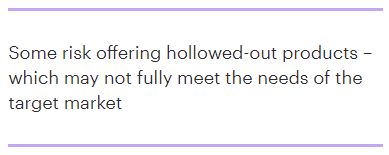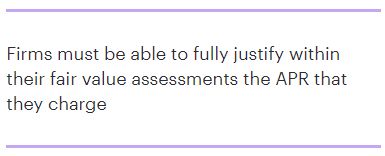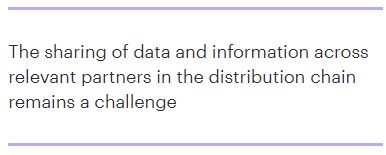In this article we share our observations of where, through our engagement with clients, we see a diversity of approaches in terms of interpretation and quality of execution of Consumer Duty rules.
As the FCA and many market commentators have been keen to stress, the passing of the July 2023 deadline to comply with Consumer Duty rules (for new and open products) marked the start, rather than the end of insurer, broker, and MGA efforts to comply with the requirements to ensure delivery of good customer outcomes.
Reflecting the fact, as the FCA itself has stated, that the regulator will be actively identifying outliers via a mix of specific data requests and thematic reviews, we are increasingly being asked by firms across the sector for our wide-lens view of how well they align with the strategies, execution and resulting outcomes of other firms.
In this article, we share our observations of where, through our engagement with clients, we see a diversity of approaches in terms of interpretation and quality of execution of Consumer Duty rules. We also provide a view on where we see firms taking opportunities to assess their wider business and operating models – in effect using a strengthened focus on the consumer to drive innovation for broader strategic, commercial and operational value.
Looking ahead to the impending deadline to deliver a formal Consumer Duty Board report, we believe firms should seek opportunities to understand and validate how well their work to date aligns with both regulatory expectations as well as wider market practice. Early validation will help firms to proactively respond to any areas of weakness or critical divergence ahead of potential submission to and scrutiny by the FCA.
We use our Conduct Risk Playbook backed by our deep technical and regulatory expertise in the insurance market to help firms quickly understand and practically respond to areas of potential concern or opportunity.
Where we see a diversity of approaches being taken by firms
The fact there is a wide range in the nature and quality of approaches taken across the insurance sector should not come as a surprise given the differing size, scale and nature of (re)insurers, brokers, and MGAs. Within this variety, there are instances where we see firms exhibiting underlying weaknesses in approach that should be responded to. These include:
The relationship between price, value and outcomes

A number of firms have removed certain product offerings where the value cannot be fully justified, whilst others risk offering hollowed-out products which may not fully meet the needs of the target market. Removal of product offerings may be associated with a stated aim to provide better value for money. However, the unintended consequence may be removal of access to cover for the poorest socioeconomic demographic less able to self-insure necessary aspects such as trace-and-access cover.
Similarly, increasing excesses is a strategy firms may use to reduce the premium paid by customers when other cover changes have little impact. Firms adopting this approach need to ensure they can evidence adequate consideration of the ability of the target market customers, including those with vulnerable circumstances, to pay the new excess levels in order to meet their needs in the event of a loss. There are also concerns around the understanding of excesses by customers, especially where the excess varies by peril.

Firms should therefore make sure that their approach to product change is appropriate. This includes identifying where they would be better served developing brand new products rather than adjusting existing offerings that may not maximise advantages for any party.
In a related area, the FCA has stated that the use of premium finance by some across the market seemingly contradicts the concept of fair value itself. This specifically relates to the ability to justify the value that typically low credit-risk customers receive when paying via monthly instalments when compared to those who pay via an annual lump sum. At a time when many customers are seeing premiums rise, firms must be able to fully justify within their fair value assessments the APR charged (as income generated will rise further where APRs remain constant).
All of the firms we have worked with have reviewed and made adjustments to their product review frameworks. We have seen a clear diversity in the level of granularity across assessment methodologies. This is both from the perspective of being able to understand individual outcomes, as well as identifying the reasons for them. We have seen firms make assessments solely using current and backward-looking data and metrics. A smaller number of firms have rightly also incorporated forward-looking views of, for example, the macro environment and anticipated customer needs. This has enabled more comprehensive assessments to be made which take account of the experience and outcomes that customers have, and are likely to have, via the purchase and ability to use a given product.
Vulnerability and hidden biases
The FCA has been clear that it expects firms to be able to identify and address when particular groups of customers, such as those with characteristics of vulnerability or who share specific protected characteristics, receive systematically poorer outcomes.
Our work across the sector has identified a variety of levels of maturity and sophistication across this space. For instance, we have seen firms with multiple legacy systems struggle to easily extract and fully understand where customers across its value chain are experiencing or have demonstrated characteristics of vulnerability. This has hindered the quality and timeliness of their internal reporting, ability to ascertain aggregate outcomes for such customers, and more importantly, their ability to fully ensure that appropriate levels of understanding and support have been provided to individuals.
We have also seen many firms explicitly undertake analysis to try to determine whether particular customer groups, such as those from ethnic minorities, are experiencing less positive outcomes than others, the reasons for that, and what action could and should be taken as a result.
Distribution chains
B
The sharing of data and information across relevant partners in the distribution chain remains a challenge for firms, especially where there has been an historical absence of requirements via existing contractual agreements and methods of engagement. The sharing of instances of individual vulnerability remains a challenge for the industry. It is positive to see many firms actively seek to update agreements and the nature of joint interactions as a result. At the more extreme end of the spectrum, we have also seen a small number of firms actively considering a change of partner where differences in expectations around information exchange and conduct-relevant performance are causing friction and hindering effective engagement and oversight. Other firms have reduced the number of partners they work with given the additional costs, complexities and risks of adequately addressing the demands of the Consumer Duty.
Transparency and governance
We have observed a range of quality across the market in relation to how clearly firms have articulated and evidenced conduct-based strategies and objectives as well as their actual approaches, activities and outcomes. Many firms have significantly enhanced their documentation, including policies, procedures and crucially outcomes-based evidence and reporting. We see a number who, in our view, still have work to do to clearly demonstrate the embeddedness of conduct-relevant requirements within ways of working and decision-making.
One reason is a lack of effective report design and subsequent completion, including the use of appropriate data and supporting commentary. Firms should be wary of assuming users implicitly understand what is being presented and the rationale for conclusions and recommendations. Conclusions and recommendations should be spelt out in a simple manner to support user understanding and challenge, which itself should be clearly evidenced via well-structured meeting minutes.
We have also seen differences in approaches to governance and oversight across firms. Some have developed new, stand-alone conduct-related committees. Others have integrated relevant requirements into existing committee structures. Others still have taken a hybrid approach. Naturally the unique characteristics of the firm should be taken into account when deciding upon an approach, including the pros and cons.
In terms of supporting stronger conduct-relevant thinking across more traditionally commercially focussed governance committees and bodies, it is positive to see many firms bolstering their diversity of outlook through the incorporation of members or attendees from the likes of Compliance and Marketing.
Our Conduct Risk Playbook and client tyre-kicks
Using our Conduct Risk Playbook, we support Boards and senior management teams in gaining a clear understanding of how well their firms' strategies, plans, execution and evidence align with our view of the FCA's requirements, good market practice and emerging opportunities.
Taking a modular approach, we use the playbook to carry out short, sharp assessments that can be undertaken either enterprise-wide or through specific lenses including product, service, function, team, and process.
Built and maintained using our unparalleled knowledge and experience across core technical domains, our playbook helps insurers, brokers and MGAs to gauge the effectiveness of their conduct-relevant activities across strategy, execution, outcomes, risk management and governance whilst remaining cognisant of the need for commercial agility and sustainable value creation. From here, if needed, we offer further support and expertise to build enhancements that respond to any identified opportunities, weaknesses, or areas of potential regulatory scrutiny.
Why WTW?
Our unrivalled technical expertise and experience within the insurance arena means we have an unparalleled ability to help clients across key disciplines such as pricing, product, claims, underwriting, risk management and governance.
Given our specialist focus on the insurance market, we occupy a unique position in terms of our ability to provide truly wide-lens insights into evolving market strategies, products and practices.
Whether through the use of new technologies and evolved methods, developing enhanced products or creating more insightful perspectives, our ways of working and solutions are rooted in being practical, efficient and unlocking real value for our clients.

The content of this article is intended to provide a general guide to the subject matter. Specialist advice should be sought about your specific circumstances.

